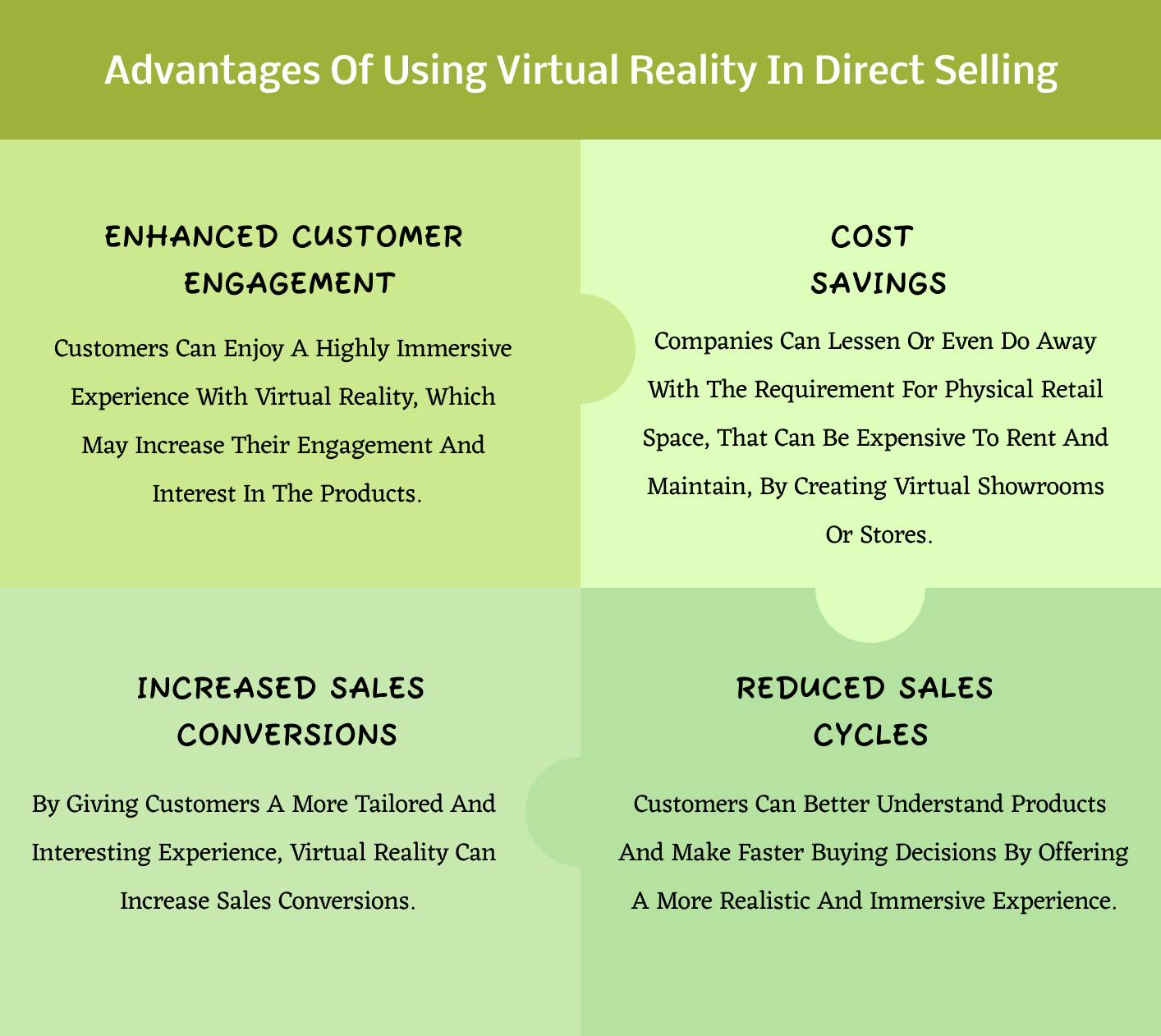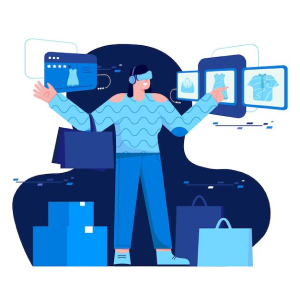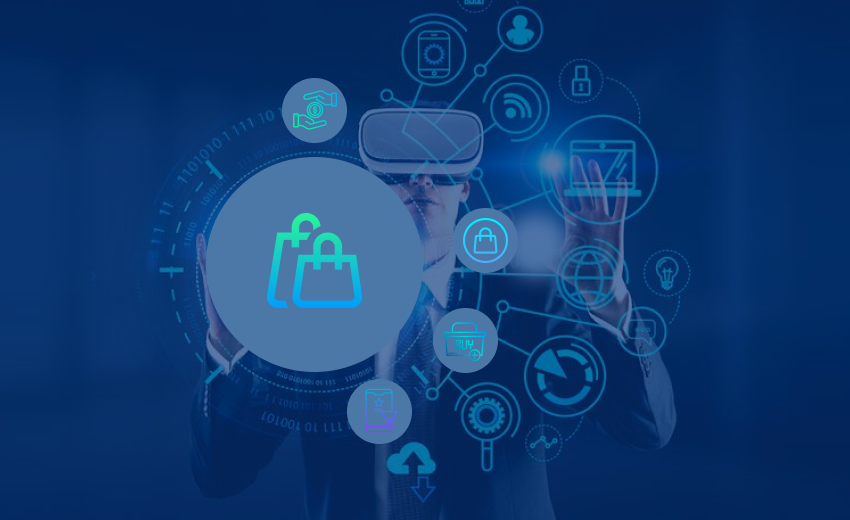You’re sitting across from a potential customer, trying to sell them on your amazing product. But no matter what you say, they just don’t seem interested 😒 You start to feel like you’re in some awkward silent movie, complete with sad music playing in the background. But, don’t worry; the answer to your selling woes may lie in virtual reality’s wonderful world 🤩
How about entering the magical land of virtual reality (VR), where you can take your customers on a wild and wacky journey through your product offerings. You can show them things they’ve never seen before, like a virtual reality roller coaster that showcases the features of your latest gadget or a 3D virtual tour of your company’s headquarters. Suddenly, you’re not just selling a product but an experience! Sound’s pretty cool, right?
Come on…Let’s immerse ourselves in the world of virtual reality in direct selling!
Overview of Virtual Reality in Direct Selling

Virtual reality encourages the sales process by adding a new level of excitement and interactivity in direct selling, much like a breath of fresh air. Customers are inspired to explore and interact with products in brand-new ways as a result, which is like adding fuel to the fire 🔥
Imagine entering a new world where you can experience products by seeing, touching, and interacting with them. That’s the magic of VR technology, and direct selling companies are employing its power to create unforgettable shopping experiences 🛍️
With virtual reality in direct selling, you’re not just viewing products on a screen; instead, you’re completely submerged in a digital setting that’s been created to highlight each one to its fullest. You can enlarge specifics, rotate objects 360 degrees, and engage with them in real-time interactions. It’s similar to having your own showroom in the convenience of your own home.

But it’s not just about the technology – it’s about the experience. When you put on a VR headset, you’re transported to a different world, which can’t be replicated with traditional marketing. It is a sensory experience that appeals to all of your senses, including touch, sound, and smell.
Direct selling companies use VR to create personalized experiences tailored to each customer’s needs and preferences, while also ensuring legal compliance. VR technology can help you picture how each product will fit into your life, whether you’re looking for a new skincare routine or trying to find the ideal piece of jewellery. It’s like having a personal shopper who is well-informed about your preferences 🛒
And the results speak for themselves. Customers who shop in virtual reality are more engaged, more likely to make a purchase, and more likely to return. As a matter of fact, both customers and direct-selling businesses benefit from this.

How Can Direct Selling Brands Enter Virtual Reality?

Define the goals
It could be to increase sales, improve customer engagement, or provide a unique experience to the customers.

Choose the VR platform
There are several VR platforms available, such as Oculus Rift, HTC Vive, and Google Daydream, and each has its unique features and target audience.

Create a VR
Whether it’s a product demo, an interactive game, or an e-commerce platform, a company should have an engaging VR experience that reflects their brand.

Develop the VR app
The app should have a simple interface and be user-friendly. So, don’t overstuff the interface with features or choices as a result.

Test and refine the app
It is crucial to thoroughly test the app and modify it in response to user feedback. The company should make sure the VR experience runs smoothly and the app is error-free.

Launch the app
They can promote it through social media, email marketing, and other digital channels to reach a wider audience.

Measure success
To calculate the return of investment (ROI) of a VR initiative, brands use metrics like downloads, engagement, and sales.

Challenges of Implementing Virtual Reality in Direct Selling

Cost of implementation
Developing a virtual reality platform can be expensive, as it needs specialized hardware and software, & the cost of hiring skilled professionals to develop & maintain the technology in direct selling.

Need for specialised skills
By having a more realistic and immersive experience that helps customers understand products, they can make purchasing decisions more quickly.

Integration with current systems
Direct selling businesses may need to update or modify their current systems in order to use virtual reality technology, which can be time-consuming and expensive.
Examples of Companies Using Virtual Reality in Direct Selling

They have incorporated VR into their sales presentations to give clients a more interactive, immersive way to see their products. Customers can investigate the features and advantages of products in a virtual setting, increasing engagement and comprehension.

Before making a purchase, customers can view how various products and shades appear on their face due to the use of virtual reality (VR) simulations. In addition to improving the customer experience, this technology has increased sales.

Customers can virtually try on jewellery and cosmetics because of the company’s use of virtual reality to showcase its products in a more interesting and interactive way. Increased customer engagement and sales conversions have resulted from this.

Customers can browse and buy products in a virtual showroom that has been created using VR. They now have a more convenient and open way to shop, which has increased sales and business growth.
Best Practices for Implementing Virtual Reality in Direct Selling
Choosing the right virtual reality platform

When selecting a virtual reality platform, MLM companies should think about ease of use, customization options, & compatibility with existing systems.
The platform ought to be straightforward to use, enable the creation of personalised content, and seamlessly integrate with existing systems. By selecting the appropriate platform, MLM companies can make sure that their VR initiatives boost customer engagement, sales, and business growth.
Creating captivating content for virtual reality

To provide customers with an engaging virtual reality experience, direct selling company should invest in high-quality, interactive content that highlights the features and benefits of their products.
This could include immersive experiences, interactive elements, and 3D models tailored to the target audience’s interests and preferences. The content should also align with the company’s brand messaging and values in order to create a memorable and distinctive VR experience that boosts customer engagement and sales.

Training sales representatives on how to use virtual reality effectively

MLM companies must give their sales representatives thorough training on how to use virtual reality initiatives in direct selling if they are to be successful.
To help sales reps feel confident with VR, provide training on technology basics, customer engagement, and ongoing support. By providing effective training, network marketing companies can maximize the benefits of VR technology.
Measuring the success of virtual reality initiatives

Setting up key performance indicators (KPIs) that measure the success of their VR initiatives is crucial for MLM companies if they want to assess the efficacy of virtual reality initiatives in direct selling.
Metrics like engagement rates, sales conversions, and customer feedback may be included. MLM companies can track the effect of VR on their sales and company growth by keeping an eye on these KPIs and making data-driven decisions to maximise their VR initiatives. KPI analysis aids MLMs in enhancing CX, VR, and strategy.

Future of Virtual Reality in Direct Selling

Gone are the days of stale sales pitches and boring presentations. Direct selling businesses can immerse their customers and distributors in a whole new level of engagement with the help of VR. Picture being able to host virtual events that are more impactful and engaging than ever before, or to showcase products in a fully realised, interactive environment.
But it’s not just about wowing your audience with stunning visuals – VR is also a tremendously powerful tool for providing an unrivalled level of service to their customers and distributors. By integrating VR with marketing automation, companies can personalize campaigns, improving lead generation and conversion rates
With VR, companies can securely store and protect sensitive information, including customer data and sales data, in a virtual environment. This provides protection against cyber-attacks and data breaches, giving peace of mind to both customers and companies.
Network marketing tools are also set to benefit from the use of VR. By using VR, distributors can connect with customers in a virtual environment, providing a more personalized experience that builds trust and loyalty.
The future of virtual reality in direct selling is looking sunny side up, with a cracking growth and adoption rate expected in the coming years. As consumers warm up to the possibilities of VR, we can anticipate a shift towards an exciting and immersive shopping experience that is set to scramble up the direct selling industry.
Reflection
To sum it up, virtual reality has the potential to be the cherry on top of the direct selling sundae, but it’s not a piece of cake. While it can lead to increased sales and customer engagement, companies need to carefully weigh the costs and benefits of incorporating VR. It’s important to remember that Rome wasn’t built in a day and that investing in the necessary resources and training can pay off in the long run. As they say, slow and steady wins the race. It’s time to put on our thinking caps and carefully evaluate how VR can be used to spice up our sales and marketing strategies.




